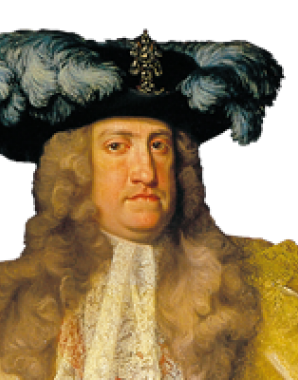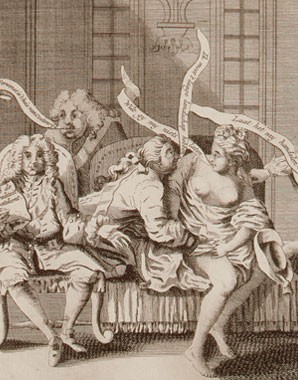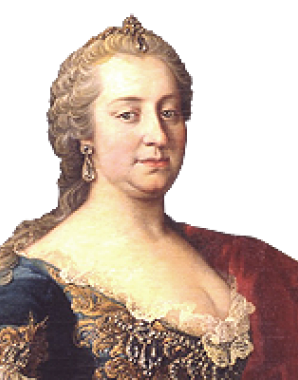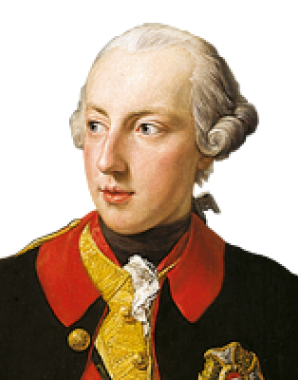Franz Stephan as Holy Roman Emperor
Following the death of Charles VI the Habsburgs lost the prestigious title of Holy Roman Emperor. Concerted efforts were needed before a Habsburg candidate once again stood at the head of the empire in the person of Franz Stephan, even though the latter was not a Habsburg by descent.
In 1741 the Prince Elector Karl Albrecht of Bavaria was elected ruler over the Holy Roman Empire and crowned emperor as Charles VII the following year. This was a heavy blow to the self-esteem of the court at Vienna, which considered the Habsburgs as having a virtually hereditary claim to the imperial title.
The reign of the Wittelsbach emperor was of only brief duration. After Habsburg troops had occupied Bavaria in the War of Succession and driven Charles out of his ancestral dominions, the hapless emperor died shortly afterwards in 1745. By then the balance of power within the empire had once more altered in favour of the Habsburgs. After lengthy diplomatic negotiations and various concessions, Bavaria and Prussia, the main rivals of the Habsburgs, agreed to the election of Franz Stephan.
Franz Stephan represented the best hope of preserving peaceful relations within the empire. The brief intermezzo of the Wittelsbach emperor Charles VII had demonstrated that a non-Habsburg ruler simply did not possess the necessary authority and power. In order to ensure that the complex construct of this ancient empire continued to function to some degree it made sense to choose the Habsburg candidate, even if the latter was not in fact a Habsburg by descent.
Franz Stephan thus constituted a kind of interim solution until a Habsburg prince – in the shape of his son Joseph (b. 1741) – was ready to take charge of the empire. Although the emperorship was in principle elective, and no dynasty had any kind of hereditary claim to the title, as the most powerful princes in the empire the Habsburgs had managed to retain the title for themselves without interruption from the middle of the fifteenth century until 1740. Despite inheriting sovereignty over the Austrian Crown Lands, as a woman Maria Theresa was barred from assuming the imperial title. When her husband became emperor she made a point of not being crowned at his side, thus emphasizing her independent position as ruler over the Habsburg Monarchy. Nonetheless, the expression ‘Empress Maria Theresa’ has been adopted into common parlance, and indeed she was even referred to as such during her own lifetime.
The election and coronation of Franz Stephan took place in Frankfurt in 1745. To his contemporaries he was known as Emperor Franz (Francis) I. He also referred to himself simply as Franz or François. His second name, Stephan, became commonly used only after his death, in order to differentiate him from his grandson Franz (the ‘good emperor Franz’), who initially became Holy Roman Emperor as Franz II and then from 1804 used the title Franz I as Emperor of Austria.
During Franz Stephan’s reign the status of the Holy Roman Empire within the European power structure diminished drastically. The Habsburg Monarchy began to diverge and develop separately from the old empire during the course of the eighteenth century. Habsburg policies no longer focused on affairs within the empire but on the formation of the state of Austria as a whole. This was mainly the result of rivalry with Brandenburg-Prussia, which had risen to become the second Great Power in the German-speaking lands. The emperorship of the Holy Roman Empire had become little more than an honorific title without any real power. Franz Stephan also saw it in this light. However, for reasons of tradition he made every effort to ensure that his son followed him on the imperial throne so that the title remained within the dynasty. With the coronation of Josephs II in Frankfurt in1764 Franz Stephan had fulfilled his mission.

















